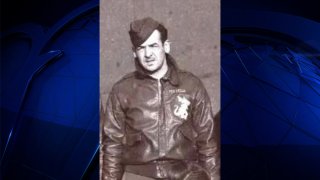
The remains of a World War II airman killed when his bomber was shot down on a mission targeting oil fields near Romania have been identified.
On Aug. 1, 1943, the B-24 Liberator bomber on which U.S. Army Air Force 1st Lt. Alfred Pezzella of Newton, Massachusetts, 27, was serving as the bombardier was hit by enemy anti-aircraft fire and crashed during the largest bombing mission against oil fields and refineries north of Bucharest.
Pezzella's remains were not identified following the war. Remains that could not be identified were buried as in the Hero Section of the Civilian and Military Cemetery of Bolovan, Ploiesti, Prahova, Romania.
After the war, American remains from the Bolovan Cemetery were disinterred for identification. More than 80 were unable to be identified and those remains were buried at Ardennes American Cemetery and Henri-Chapelle American Cemetery, both in Belgium.
Get New England news, weather forecasts and entertainment stories to your inbox. Sign up for NECN newsletters.
In 2017, the unidentified remains of those who participated in the bombing mission were sent for additional examination and identification.
To identify Pezzella’s remains, scientists from Defense POW/MIA Accounting Agency used anthropological analysis. In addition, scientists from the Armed Forces Medical Examiner System used mitochondrial DNA analysis.
Pezzella will be buried in Bourne, Massachusetts.

